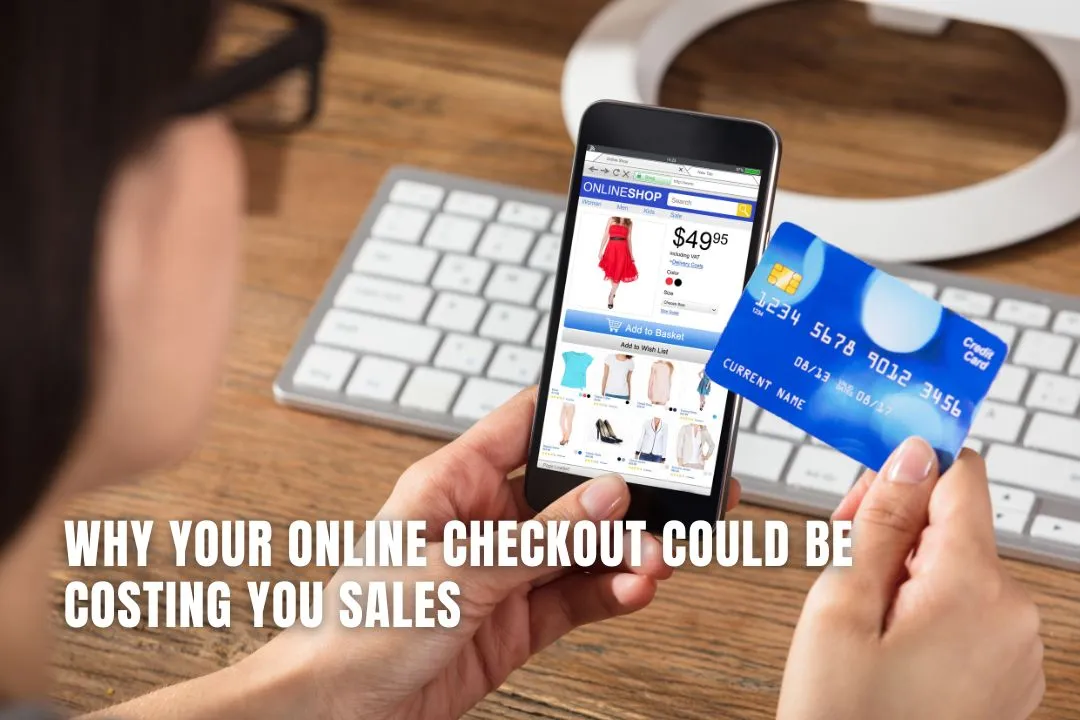
You can have the best product, the most compelling marketing and the smoothest website experience. But if your checkout system isn’t working efficiently, you’re likely losing sales without even realising it.
The final stage of a customer journey should be simple, secure and fast. When it isn’t, potential buyers abandon their carts and take their money elsewhere.
Let’s explore why your checkout could be silently undercutting your success and how to fix it before it costs you more.

The average global cart abandonment rate is 70.19%. That means more than two-thirds of customers leave without completing a purchase.
Some reasons are outside your control, such as comparison shopping or indecision. But many are not. Slow loading times, forced account creation, unclear costs and limited payment options are all preventable issues that erode trust.
Small businesses are especially vulnerable. Unlike larger brands, you may only get one shot to make a good impression. If your checkout doesn’t inspire confidence, your conversion rate suffers, and so does your reputation.
The solution begins with a secure, user-friendly payment system. Customers expect to pay using their preferred method, whether that’s credit card, Apple Pay or another digital wallet. A rigid or outdated checkout process creates unnecessary friction.
Integrating tools that allow you to accept online payments across multiple platforms can increase your success rate. More than that, automating invoice creation and payment tracking helps your business stay organised behind the scenes.
The right system reduces human error, supports cash flow management and sends a clear message: your business is professional, modern and trustworthy.
Security isn’t only a technical issue. It’s a business differentiator. When a customer reaches the payment page, they’re asking a simple question: Can I trust you with my money?
A single flaw in your payment security can cause lasting damage. From phishing attempts to fake payment portals, bad actors exploit businesses that neglect basic safeguards.
Protecting your digital infrastructure is part of running a resilient company. SSL certificates, secure gateways, multi-factor authentication and PCI compliance are not optional.
Taking proactive steps to manage cyber risks for small businesses protects your customers and your reputation. In 2025, trust is one of your most valuable business assets.
A clean design isn’t enough if the process itself is flawed. Keep your checkout flow short and intuitive. Eliminate unnecessary fields, allow guest checkout and clearly display all costs upfront.
Test the process regularly on different devices and browsers. Mobile users now make up a significant portion of all online sales. If your mobile checkout fails, so does your sales strategy.
Use heatmaps or analytics to monitor where drop-offs happen. If customers consistently leave at a certain stage, it’s a sign that something needs to change.
You work hard to bring people to your site. Don’t let a broken or outdated checkout process become the reason they leave without buying.
Optimising how you accept payments is not a back-end technical fix. It’s a revenue and trust issue. By making your checkout faster, safer and easier to use, you’re not just improving customer experience. You’re increasing conversions, building loyalty and protecting your bottom line.
In a market where small businesses must compete for every sale, investing in your payment process is a strategic decision.
Your checkout is the final, critical step in the buying process. Even if your product and website are excellent, a slow, complicated, or insecure checkout can cause customers to abandon their carts and take their business elsewhere.
Cart abandonment is when a shopper adds items to their online cart but leaves the site before completing the purchase. Common reasons include unexpected costs like shipping, being forced to create an account, slow loading times, and a lack of preferred payment methods.
The global average cart abandonment rate is approximately 70%. This means that for every ten potential customers, seven leave without finalising their purchase, highlighting a massive opportunity for improvement.
Small businesses often have fewer opportunities to win over a customer. A poor checkout experience can damage not just a single sale but also the business's reputation, as shoppers may not return for a second chance.
To reduce friction and appeal to more customers, you should provide flexible options. These include standard credit and debit cards, alongside popular digital wallets like PayPal, Apple Pay, and Google Pay.